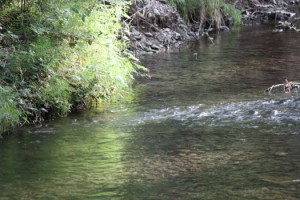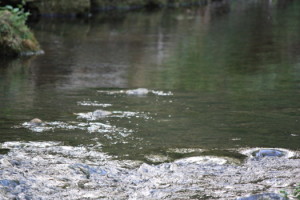DREDGING: EFFECTIVENESS AND RISKS
DREDGING: EFFECTIVENESS AND RISKS
Widespread dredging could make flooding in some communities worse in future – not better – according to a new report published by The Chartered Institution of Water and Environmental Management (CIWEM) and endorsed by the Blueprint for Water coalition of environmental NGOs.
Far from advocating dredging as a panacea, the report – published by independent flood management experts CIWEM, and backed by a range of organisations – suggests solely relying on dredging can even make some communities more vulnerable to the risk of flooding. Instead, the report’s authors call for leadership promoting sustainable measures to control flooding crises, rather than politically-motivated, knee-jerk reactions.

CIWEM is an independent professional body. Nigel Hendley, CIWEM’s Interim Chief Executive, said: “Flood risk management is an increasingly challenging balance of measures and decisions which require a sound evidence base and expert judgment. Dredging can be successfully employed to reduce flood impact under certain conditions, and alongside other measures to protect river ecology, but it can also have serious impacts on downstream flood risk so requires very careful consideration as an option. We should seek sustainable alternatives wherever possible and assess these as well as dredging on a site by site basis.”
Janina Gray, of the Salmon & Trout Association and chair for the Blueprint for Water coalition, said: “What we need now is leadership in this crisis. People across the breadth of southern Britain have been swamped by devastating floods. These people are looking for solutions and our report shows those encouraging dredging as a simple solution to a complex problem are offering false hope. We need the Prime Minister to show leadership not just now but into the future, working with evidence and experts to make the right long-term decisions for people, businesses and wildlife.”
Addressing the immediate needs of affected communities must take priority. The Blueprint for Water coalition and CIWEM trust that once the flood waters have subsided lessons will be learned from these floods. A longer-term, evidence-based policy of land use management is needed to address both flooding and drought at catchment-scale.

Martin Salter, National Campaigns Coordinator at the Angling Trust, said: “Rivers establish flood plains for a purpose and we abuse them at our peril. Dredging is no silver bullet but proper catchment management can make a difference. The government also needs to toughen up rather than weaken planning protection for vulnerable floodplains. It’s worrying to hear that there is currently a 30% increase in applications in locations designated as high flood risk by the Environment Agency.”
Martin Harper, the RSPB’s Conservation Director, said: “Working shoulder-to-shoulder with our farming neighbours in the Somerset Levels we know they are having a devastating time and farming in these areas will need to become more resilient. However, land management, from the upper reaches of catchments to the lowlands, has been part of the problem and must be part of the solution to managing uncontrolled flooding. Defra is due to decide the conditions it places on the £12 billion of taxpayers’ money given to farming through the Common Agriculture Policy in England. This is an opportunity to ensure we create more flood-resilient landscapes and farming practices in the future.”
Stephen Trotter, The Wildlife Trusts’ Director, England, said: “We are in urgent need of better planning to adapt to future weather events, such as flooding and drought. Whilst we need a range of solutions to reduce the impacts of extreme events, the way we manage the landscape can make a big difference, as this report shows. The Government must invest in improving the water- holding capacity of the land, making more room for water in urban and rural areas to protect people, homes, businesses and wildlife. Working with nature, not against it, is key.’
The report makes it clear that dredging may play an important role in flood-risk management, but it is not a stand-alone solution. It is one of a range of tools and interventions, such as reducing run-off, working with natural processes to slow the flow of water, and increasing infiltration and flood storage throughout catchments.

Wildfowl & Wetlands Trust Chief Executive Martin Spray said: ‘Wetlands alone provide £4bn worth of flood defence in the UK each year by storing water or buffering us from high tides. This dwarfs the millions spent on manmade defences. Working with nature at a catchment level, not against it, gets the power of nature working for us.’
Jeremy Biggs of the Freshwater Habitats Trust said: ‘It’s crucial we get more and better information about how these measures work together – that knowledge will help us provide better protection for people and nature. At the moment we’ve only got a few small-scale pilots – we need to see what happens when we work across whole landscapes, and not just in little pocket handkerchief-sized patches.’
Factbox:
The Blueprint for Water coalition is a unique coalition of environmental, water efficiency, fishing and angling organisations which call on the Government and its agencies to set out the necessary steps to achieve “sustainable water” by 2015. The Blueprint for Water is a campaign of Wildlife and Countryside Link. More information is available at: www.blueprintforwater.org.uk.
